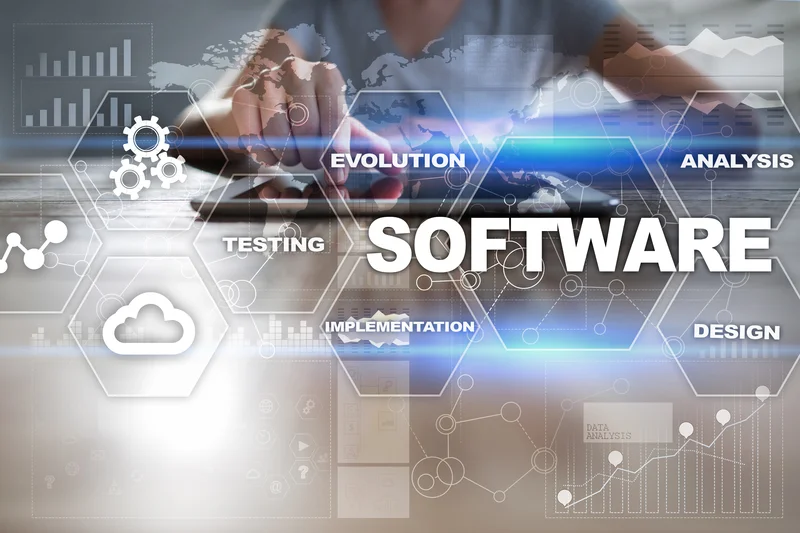Computer-integrated manufacturing CIM Definition & Facts
HashMicro, a major developer of computer-integrated manufacturing software, helps many large and small businesses with their day-to-day operations. In general, Computer-Integrated Manufacturing is a concept/philosophy for integrating multiple business operations with automated functions in a production system. RoboticsBiz is a tech portal that brings together experts in robotics research, artificial intelligence and machine learning technologies around the world. The Computer Integrated Manufacturing Open System Architecture was proposed in 1990 by the AMCIE consortium to provide an open systems architecture that specifies both enterprise modeling and enterprise integration required by CIM environments. A company adopting CIM must take into consideration the strategy and compatibility of CIM with the overall goals of the firm. While CIM can be costly to implement, difficult to transition, and requires a total commitment the benefits are seen in increased quality, cost reductions, and faster work flow.
They write new content and verify and edit content received from contributors. Let us know if you have suggestions to improve this article .
Toward a Human–Robot Symbiotic System1
ERP systems integrate internal and external management information across an entire organization, embracing finance/accounting, manufacturing, and sales and services. Computer-integrated manufacturing refers to the use of computer-controlled machineries and automation systems in manufacturing products. CIM combines various technologies like computer-aided design and computer-aided manufacturing to provide an error-free manufacturing process that reduces manual labor and automates repetitive tasks.

So, we found a top-notch CV specialist to run the computer vision workstream. After our experts carefully examined the existing algorithms, they decided to redevelop them entirely. That is especially critical given the global scale at which our client is operating. The application of Computer vision in the manufacturing industry is almost limitless.
Product Groups
Computer-aided design and computer-aided manufacturing. Today it is widely recognized that the scope of computer applications must extend beyond design and production to include the business functions of the firm. The name given to this more comprehensive use of computers is computer-integrated manufacturing . High, depending on the type of product; consequently, products are now being designed so that they can be assembled more easily, and faster by automated machinery, thus reducing the total manufacturing cost.
In this case, CV can analyze new images and compare them to an already existing dataset to find anomalies and prevent potentially dangerous situations on production lines and manufacturing sites. CV systems are widely used for tool and detail positioning on the production lines. The system identifies the location of an object and sends these coordinates to the robot. Our People Achieving your goals is much easier with a strong team by your side. It is made up of savvy entrepreneurs, industry experts, and technology enthusiasts who work together towards a common vision. Team Extension Grow your team and expand your software development capabilities with a reliable tech partner by your side.
Word of the Day
The scope of the computer system includes all activities that are concerned with manufacturing. In many ways, CIM represents the highest level of automation in manufacturing. Today, many well-developed tools are available that can be successfully applied to meet the functional needs of manufacturing processes. Experience gained applying software and computers to manufacturing has been well documented, and international standards communicate generally accepted best practices in manufacturing systems integration. Manufacturers today can take advantage of experience gained from early adopter’s efforts and apply current technology with a high degree of confidence that the application will successfully meet requirements.

Computer process monitoring involves the collection of data from the factory, the analysis of the data, and the communication of process-performance results to plant management. These measures increase the efficiency of plant operations. Computer process control entails the use of the computer system to execute control actions to operate the plant automatically, as described above. Indirect connections between the computer system and the process involve applications in which the computer supports the production operations without actually monitoring or controlling them. These applications include planning and management functions that can be performed by the computer more efficiently than by humans alone.
Table of Content
Our team also designed the architecture of the multiplatform computer vision mobile application and is responsible for its development (end-to-end). The application covers object detection, computer integrated manufacturing package damage detection, OCR, and NLP for document processing. Our client is the global leader in the manufacture, distribution, and service of electronic test tools and software.
- Many companies are experiencing difficulties in developing cost patterns to define specific objectives and justify CIM cost.
- Computer-integrated manufacturing is the manufacturing approach of using computers to control the entire production process.
- Automatic mail-sorting machines have been developed for use in many post offices throughout the world to read codes on envelopes and sort the envelopes according to destination.
- What’s more, robotic solutions ensure greater productivity that maximizes throughput and minimizes human error.
- This is one of the causes affecting trends in management accounting changes.
The client requested the development of multiple solutions in the field of enterprise asset maintenance. They needed the solution with high standards of security, reliability, scalability, https://www.globalcloudteam.com/ and extensibility. It is critical to get more visibility into your manufacturing issues and requirements. You need to analyze your final product’s quality and how it can be enhanced.
Analyzing your manufacturing problems
Meanwhile, you can define manufacturing applications from the point of view of vertical markets, specific implementation models, and a broad range of functional category. When integrated, CIM is responsible for the complete production process. With so much riding on its performance, it’s baffling that many manufacturing firms fail to invest in adequate protection for what is undoubtedly a capital asset. This client had computer vision algorithms created by another provider. They were insufficient and not suitable for production.

Computer-integrated manufacturing is a manufacturing method that employs computers to control the entire manufacturing process. Individual processes can exchange information and initiate actions thanks to this integration. Although computer-integration can make manufacturing faster and less error-prone, the main benefit is the creation of automated manufacturing processes.
Advantages of CIM
One is the just-in-time manufacturing system, originally developed by Toyota, which includes a range of techniques aimed at simplification and waste reduction within the manufacturing system. CIM is a combination of different applications and technologies like CAD, CAM, computer-aided engineering, robotics, manufacturing resource planning and enterprise management solutions. It can also be considered as an integration of all enterprise operations that work with a common data repository. With the help of industrial IoT, 3D printing, and robotics itself, you can boost the quality and consistency of the production process, as well as the final product. Also, IoT enables real-life condition monitoring of your machines and their predictive maintenance.
